How To Cook A Prime Rib Roast On The BBQ
Wondering how to cook a prime rib roast on the BBQ? I got you! Cooking a prime rib roast on the BBQ is the ultimate way to combine the rich, juicy flavors of this luxurious cut with the smoky, charred goodness that only grilling can provide.
Whether you’re hosting a holiday feast or simply indulging in a weekend treat, grilling a prime rib roast adds an element of outdoor adventure and unmatched taste.
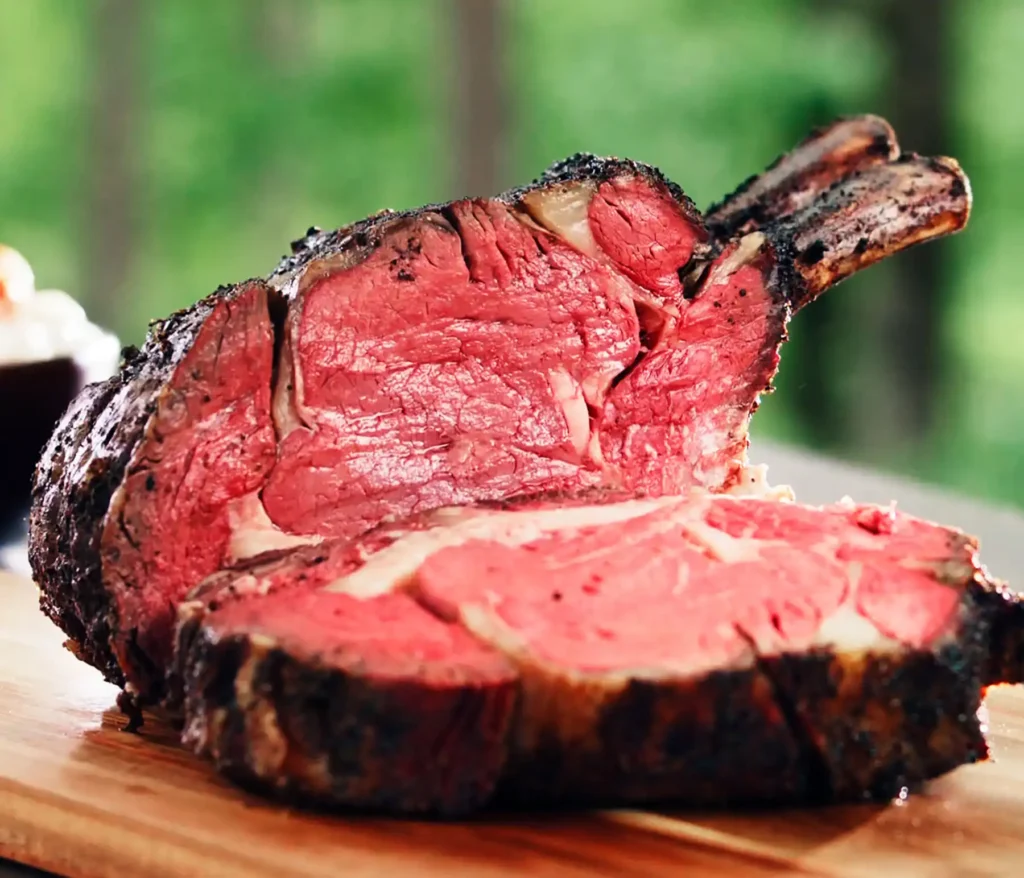
This method infuses the meat with a deliciously smoky aroma while keeping it tender and juicy on the inside, making it a centerpiece that will impress any crowd. Let’s dive into the steps to achieve the perfect BBQ prime rib roast and ensure your grilling success.
Why Grilled Prime Rib is a Great Choice
- Enhanced Flavor: The smoky aroma from the BBQ perfectly complements the rich taste of prime rib.
- Juicy and Tender: High heat sears the exterior, locking in juices for a succulent interior.
- Festive Appeal: Grilling creates a fun and interactive cooking experience, ideal for gatherings.
- Aromatic Ambiance: The scent of grilling meat sets a celebratory mood, perfect for special occasions and backyard events.
Selecting the Right Prime Rib
Choosing the perfect prime rib for grilling is crucial to achieving a delicious result. Here are some tips to help you select the best cut:
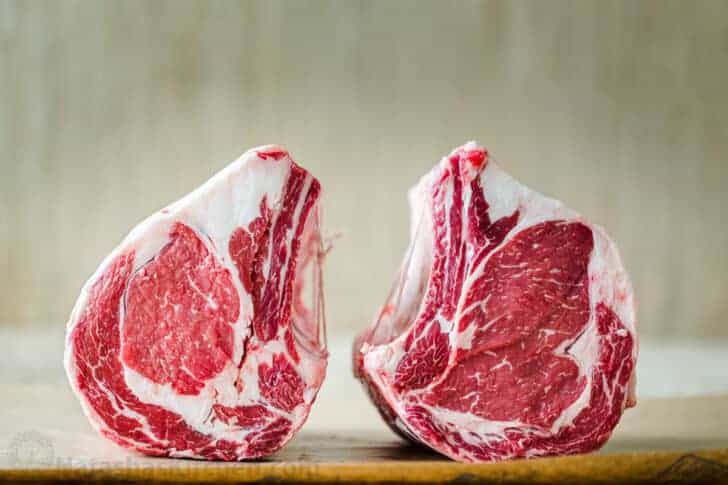
- Size Matters: Determine the size based on the number of guests. A bone-in prime rib usually serves about two people per rib, so a three-rib roast will serve six.
- Marbling: Look for a roast with good marbling – the streaks of fat within the muscle. Marbling is key to flavor and tenderness, as the fat melts during grilling and bastes the meat.
- Quality Grade: Opt for USDA Prime grade if possible, as it has the highest marbling and quality. USDA Choice is also a good option if Prime is unavailable.
- Bone-In vs. Boneless: Bone-in prime rib offers more flavor and juiciness, while boneless is easier to handle and carve. Both are great choices depending on your preference.
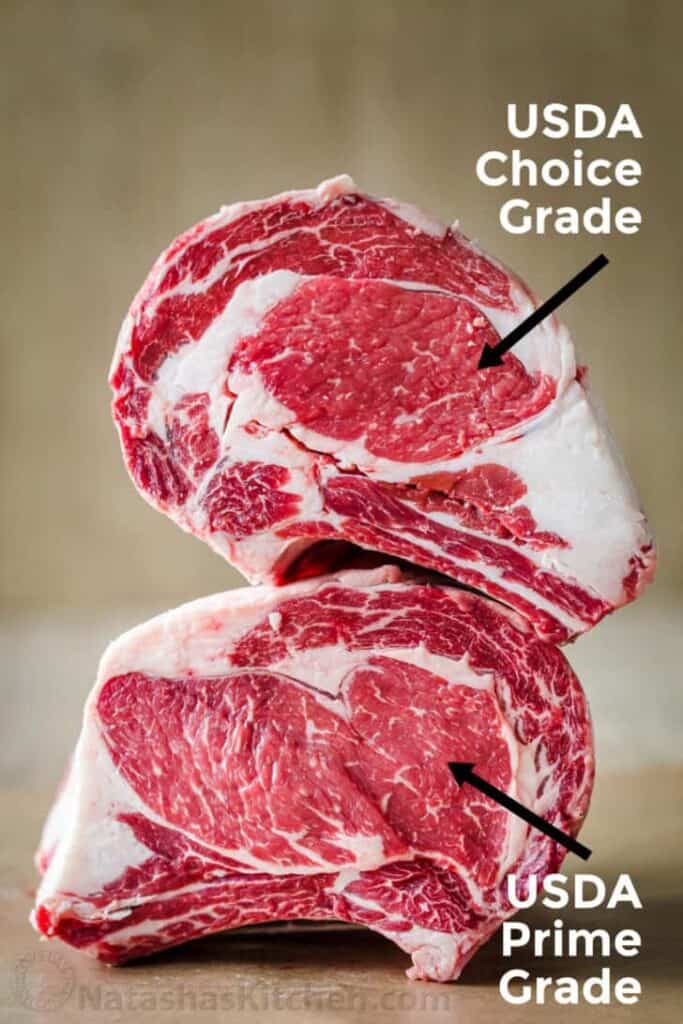
Prepping Your Prime Rib for Grilling
Preparing your prime rib properly is key to a successful grilling experience. Follow these steps for the best results:
Removing the Silver Skin
Removing the silver skin from your prime rib is an important step to ensure better seasoning penetration and a tender bite. Here’s how to do it:
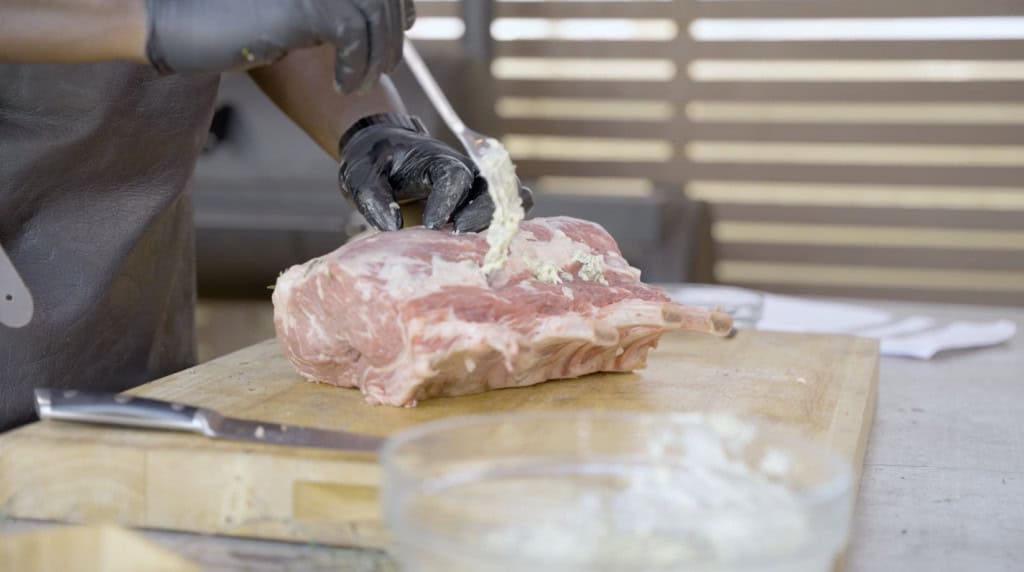
- Identify the Silver Skin: The silver skin is a thin, silvery-white membrane found on the surface of the meat.
- Use a Sharp Knife: Select a sharp boning or paring knife for precision.
- Create a Starting Point: Slide the tip of the knife under the silver skin at one end of the roast. Lift the membrane slightly to create a small gap.
- Cut Along the Surface: Angle the knife upwards and carefully cut along the length of the silver skin, keeping the blade as close to the surface as possible to avoid wasting meat.
- Pull and Cut: Use your other hand to gently pull the silver skin away from the meat while cutting. Work slowly to remove all the membrane without removing too much meat.
Frenching the Bones
Frenching the bones adds a touch of elegance to your prime rib roast. This technique involves trimming the meat and fat away from the ends of the rib bones for a cleaner presentation. Here’s how to do it:

- Locate the Rib Bones: Identify the rib bones at one end of the roast.
- Trim the Meat and Fat: Using a sharp knife, cut along the bones to remove the meat and fat covering them. Start at the base of the bones and work your way up.
- Scrape the Bones Clean: Once the meat and fat are removed, use the back of the knife to scrape any remaining bits off the bones. This step ensures the bones are clean and white.
- Repeat: Continue this process for each rib bone until all are neatly frenched.
The Secret Trim
Enhancing your prime rib roast with a specific trimming technique can improve its cooking and flavor. Here’s a secret trim method:
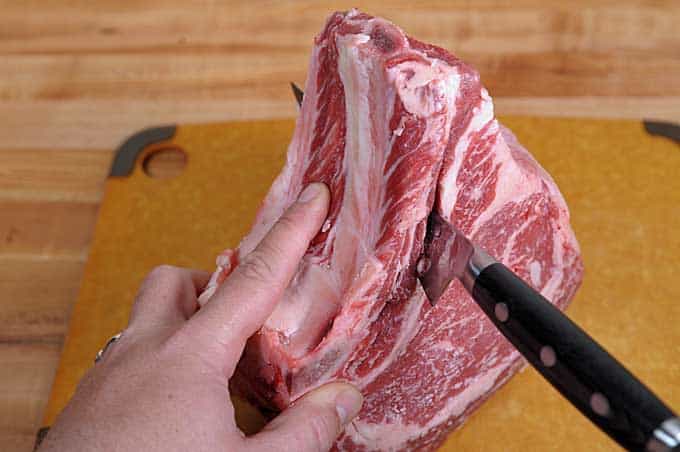
- Fat Cap Trimming: Trim the fat cap down to about 1/4 inch thickness. While some fat is essential for flavor and moisture, too much can cause flare-ups on the grill.
- Scoring the Fat Cap: Lightly score the fat cap in a crisscross pattern with shallow cuts. This allows the seasoning to penetrate better and helps render the fat during grilling.
- Removing Excess Fat Between Ribs: If your roast has a thick layer of fat between the ribs, trim it down. This helps the meat cook more evenly and prevents excessive greasiness.
Grilling Techniques for Prime Rib
Grilling a prime rib roast involves a combination of slow cooking and creating a flavorful crust. Here’s a detailed walkthrough of the process:
Preheat and Prepare the Grill
- Two-Zone Cooking: Set up your grill for two-zone cooking. One side should be high heat for searing (around 450°F or 232°C), and the other side should be low heat for slow cooking (around 250°F or 121°C).
- Preheat the Grill: Allow your grill to preheat for about 15-20 minutes.
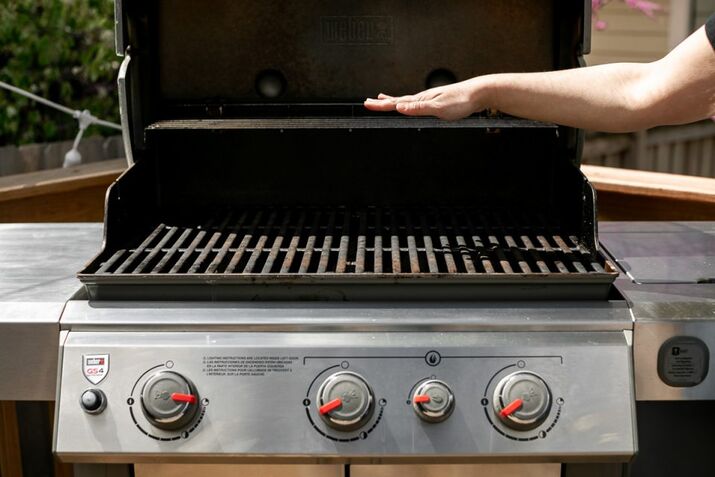
Slow Cooking Phase
Slow cooking the prime rib on the grill is essential for achieving optimal tenderness and even cooking. Here’s how to do it:
- Indirect Heat Setup: Arrange your grill for two-zone cooking with one side set to low heat (around 250°F or 121°C) and the other side unlit or on low.
- Positioning the Roast: Place the prime rib on the cooler side of the grill, bone side down if bone-in, or on a rack if boneless.
- Temperature Monitoring: Insert a meat thermometer into the thickest part of the meat, avoiding the bone.
- Slow Cooking: Close the grill lid and let the prime rib cook slowly. Maintain a consistent grill temperature and avoid opening the lid frequently.
- Target Internal Temperature: Cook until the internal temperature reaches about 110°F (43°C) for rare, 120°F (49°C) for medium-rare, or 130°F (54°C) for medium.
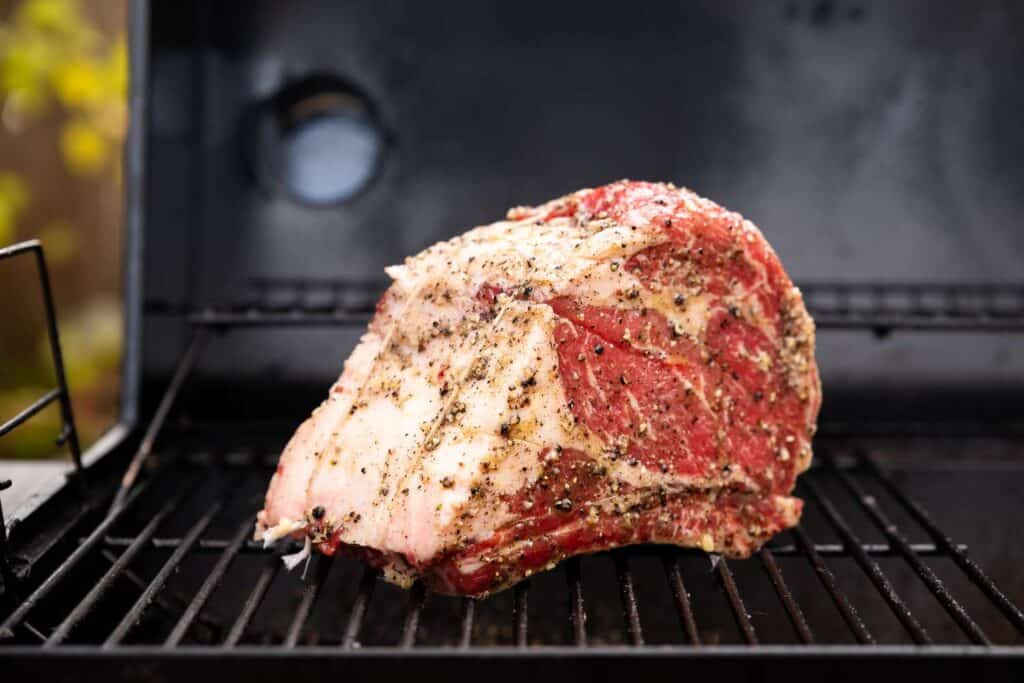
Creating the Crust
Achieving a perfect crust on your prime rib is all about high heat and a few careful steps:
- Move to Direct Heat: Once the internal temperature is reached in the slow cooking phase, transfer the prime rib to the hot side of the grill (around 450°F or 232°C).
- Searing: Sear each side of the roast for about 2-3 minutes. The goal is to achieve a deep brown, caramelized crust.
- Rotate for Even Crust: Rotate the roast as needed to ensure all sides are evenly seared. Keep a close eye to prevent burning.
- Monitor Closely: Use tongs to handle the meat and avoid piercing it, which can release juices.
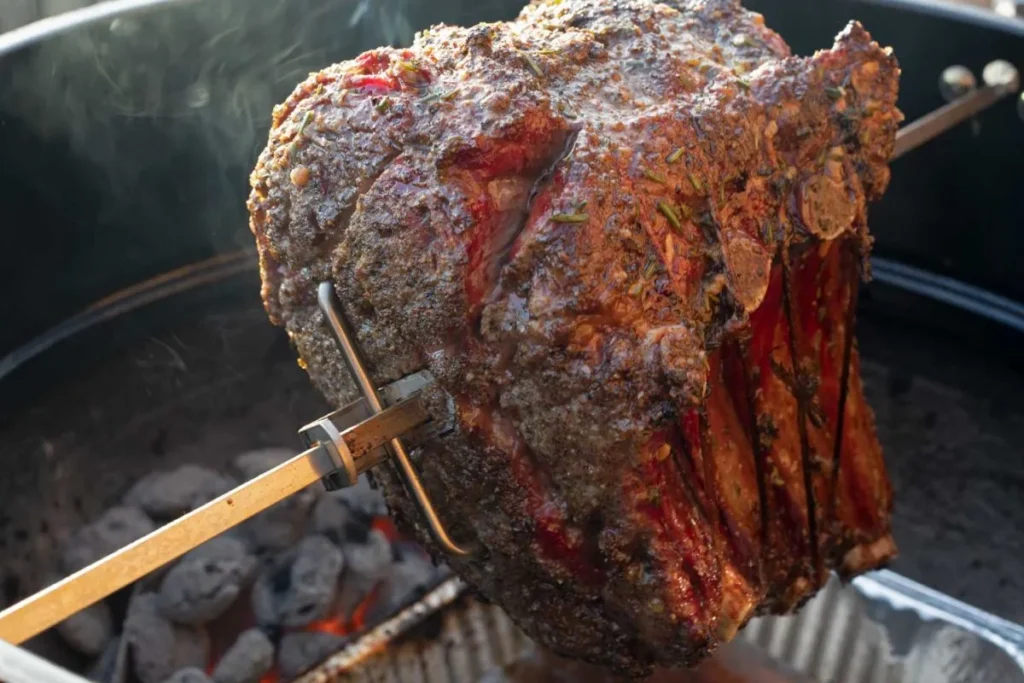
Resting the Meat
Resting the prime rib after grilling is crucial for juicy, tender results. Here’s why and how to do it:
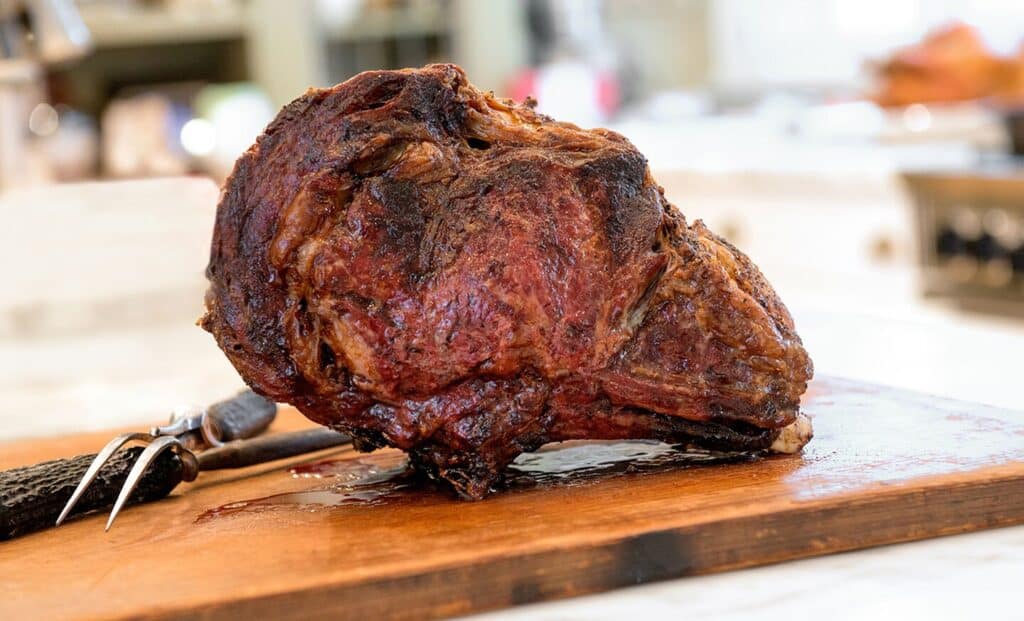

- Importance of Resting: Resting allows the juices to redistribute throughout the meat, making it more tender and flavorful.
- Tent with Foil: Remove the roast from the grill and tent it loosely with aluminum foil. This helps retain heat without causing it to steam.
- Resting Duration: Let the prime rib rest for 20-30 minutes. During this time, the internal temperature will rise by about 5-10 degrees, reaching your target doneness.
- Final Temperature Check: Ensure the final internal temperature is 120°F (49°C) for rare, 130°F (54°C) for medium-rare, or 140°F (60°C) for medium.
- Carving and Serving: Once rested, carve the prime rib against the grain into thick slices and serve immediately.
Want to master another impressive BBQ dish? Check out our tips on BBQ a Tomahawk Steak for more inspiration.
Different Grilling Methods
Grilling prime rib can be done using various methods, each offering unique advantages:
- Pellet Smokers: Provide precise temperature control and impart a rich, smoky flavor. Ideal for slow cooking and consistent results.
- Gas Grills: Convenient and easy to control. Preheat to high for searing, then switch to low for slow cooking. Use wood chips for added smokiness.
- Charcoal Grills: Deliver an authentic smoky flavor and high heat. Set up for two-zone cooking, with hot coals on one side for searing and an indirect side for slow cooking.
Choose the method that best suits your preference and equipment for a delicious prime rib.
Using a Pellet Smoker
Grilling prime rib with a pellet smoker ensures consistent temperature control and a rich, smoky flavor. Follow these tips:
- Preheat the Smoker: Set your pellet smoker to 250°F (121°C).
- Wood Pellets: Use high-quality wood pellets like oak, hickory, or mesquite for robust flavor.
- Place the Roast: Position the prime rib directly on the smoker grate, bone side down.
- Monitor Temperature: Insert a meat thermometer and cook until the internal temperature reaches your desired doneness (110°F for rare, 120°F for medium-rare).
- Crust Creation: Increase the smoker temperature to 450°F (232°C) for the final 15-20 minutes to form a crust.
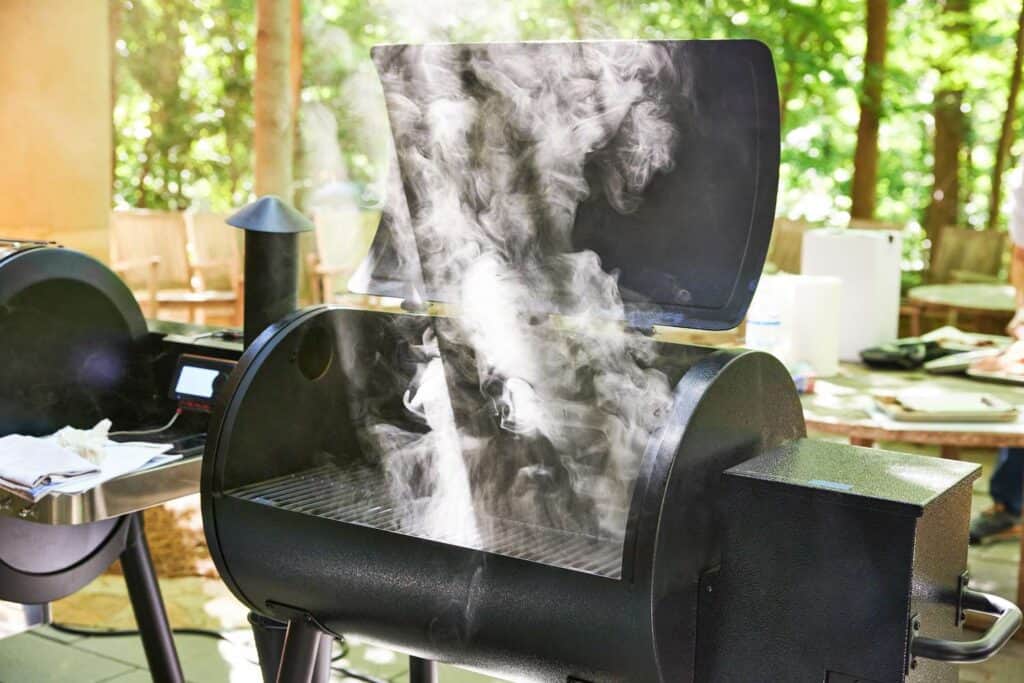
Grilling with Gas
Using a gas grill offers convenience and control. Here’s how to do it:
- Preheat the Grill: Set up for two-zone cooking: one side on high (450°F or 232°C) and the other on low (250°F or 121°C).
- Initial Slow Cooking: Place the prime rib on the cooler side, bone side down. Close the lid and cook until the internal temperature reaches 110°F (rare) or 120°F (medium-rare).
- Creating the Crust: Move the roast to the hot side of the grill. Sear each side for 2-3 minutes until a crust forms.
- Monitor and Adjust: Use a meat thermometer and adjust heat as needed to avoid flare-ups.
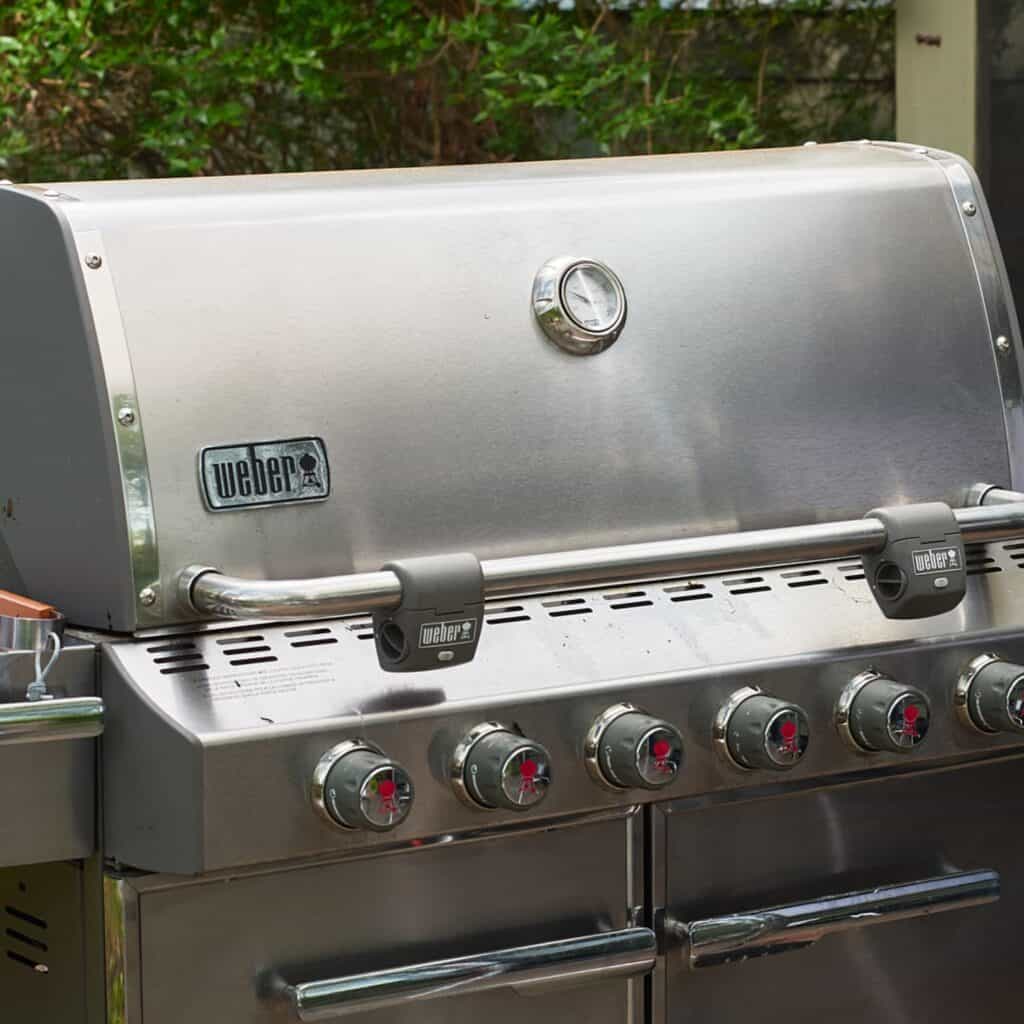
Charcoal Grilling
Charcoal grilling adds an authentic smoky flavor to your prime rib. Follow these steps:
- Prepare the Grill: Set up a two-zone fire with hot coals on one side and no coals on the other.
- Slow Cooking: Place the prime rib on the cooler side, bone side down. Maintain a grill temperature of 250°F (121°C).
- Smoking Chips: Add soaked wood chips like hickory or oak to the coals for extra smokiness.
- Monitor and Rotate: Cook until the internal temperature reaches 110°F (rare) or 120°F (medium-rare), rotating the roast occasionally for even cooking.
- Creating the Crust: Move the roast over the hot coals and sear each side for 2-3 minutes until a crust forms.
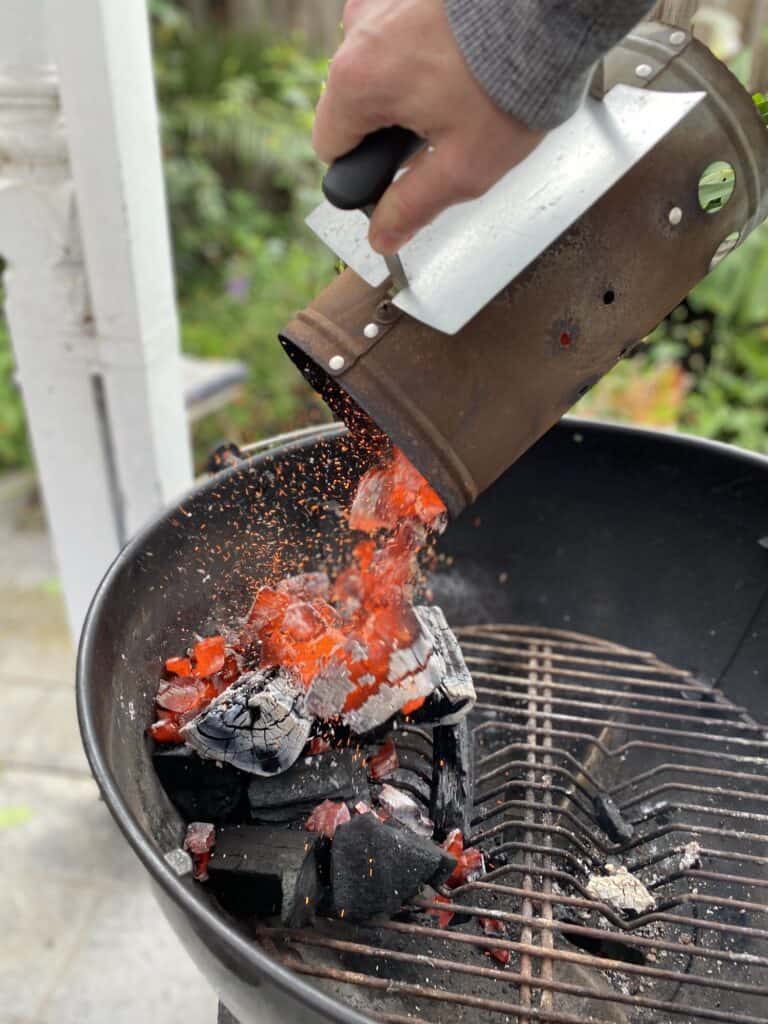
Interested in more BBQ techniques? Check out our article on How Long Does It Take to BBQ Lamb Chops Perfectly for precise cooking times and tips.
Serving and Pairing Ideas
Grilled prime rib is a showstopper that deserves equally impressive sides and drinks. Here are some suggestions to elevate your meal:
Side Dishes
- Garlic Mashed Potatoes: Creamy and flavorful, they soak up the prime rib juices beautifully.
- Roasted Vegetables: A mix of carrots, Brussels sprouts, and parsnips adds color and complements the rich meat.
- Yorkshire Pudding: This traditional side is perfect for mopping up savory juices.
- Caesar Salad: Crisp and refreshing, it balances the heaviness of the prime rib.

Drinks
- Red Wine: A robust Cabernet Sauvignon or Merlot pairs excellently with the rich flavors of the meat.
- Craft Beer: A dark stout or rich porter complements the smokiness of the grilled prime rib.
- Classic Cocktails: Old Fashioned or a Manhattan adds a touch of elegance to your dinner.

Storing Leftovers
Properly storing and reheating leftover prime rib ensures you maintain its quality and flavor. Follow these best practices:
- Cool Quickly: Allow the prime rib to cool to room temperature within two hours after cooking to prevent bacterial growth.
- Wrap Tightly: Wrap the prime rib tightly in aluminum foil or plastic wrap to protect it from air exposure and moisture loss.
- Use Airtight Containers: Place the wrapped meat in an airtight container for added protection.
- Refrigerate Promptly: Store in the refrigerator at or below 40°F (4°C) if you plan to consume it within 3-4 days.
- Freeze for Longer Storage: If storing for more than a few days, freeze the wrapped prime rib. It can be stored in the freezer for up to 3 months. Label the package with the date for reference.
Reheating Leftovers
- Slow and Gentle: Reheat the prime rib slowly to maintain its tenderness. Preheat your oven to 250°F (121°C).
- Wrap in Foil: Place the prime rib in an oven-safe dish, add a splash of beef broth or water to keep it moist, and wrap it in foil.
- Reheat Gradually: Heat in the oven for about 20-30 minutes or until the internal temperature reaches 135°F (57°C
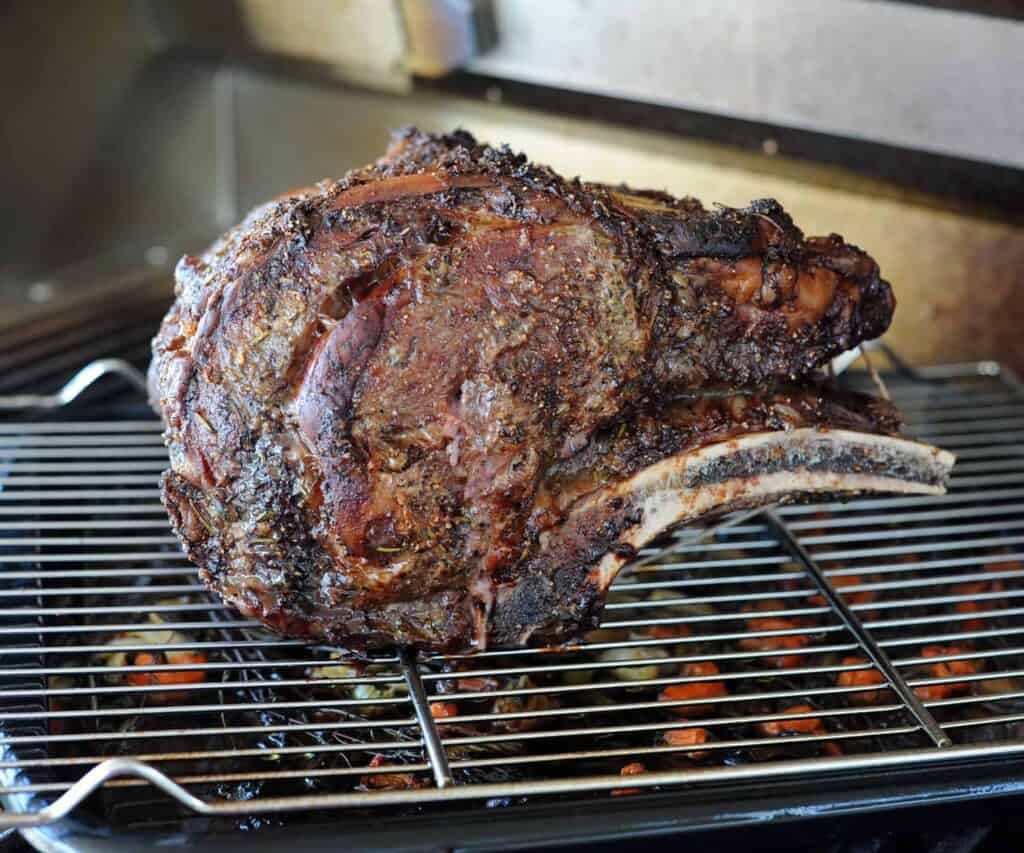
Common Grilling Mistakes and How to Avoid Them
1. Not Preheating the Grill
- Mistake: Starting to grill without preheating can cause uneven cooking and poor searing.
- Solution: Always preheat your grill for at least 15-20 minutes. Ensure one side is set to high heat for searing and the other to low heat for slow cooking.
2. Overcooking
- Mistake: Cooking the prime rib for too long results in a dry, tough roast.
- Solution: Use a meat thermometer to monitor internal temperatures. Remove the roast when it reaches 110°F (43°C) for rare, 120°F (49°C) for medium-rare, or 130°F (54°C) for medium.
3. Under seasoning
- Mistake: Not seasoning enough results in bland meat.
- Solution: Generously season the prime rib with kosher salt, freshly ground black pepper, and a rub of your choice. Let it sit at room temperature for an hour before grilling to absorb the flavors.
4. Skipping the Resting Period
- Mistake: Carving the roast immediately after grilling causes juices to run out, leading to dry meat.
- Solution: Tent the prime rib with foil and let it rest for 20-30 minutes. This allows the juices to redistribute, ensuring a juicy, flavorful roast.
5. Using Direct Heat Only
- Mistake: Cooking solely over direct heat can burn the exterior while leaving the interior undercooked.
- Solution: Use a two-zone cooking method. Start with indirect heat to cook the roast evenly, then finish with direct heat to create a crust.
6. Neglecting to Rotate
- Mistake: Not rotating the prime rib can lead to uneven cooking.
- Solution: Rotate the roast occasionally during the slow cooking phase for even heat distribution.
Using a BBQ grill to prepare a prime rib roast with a smoky flavor.
FAQs
Disclosure: Our blog contains affiliate links to products. We may receive a commission for purchases made through these links. However, this does not impact our reviews and comparisons. We try our best to keep things fair and balanced, in order to help you make the best choice for you.
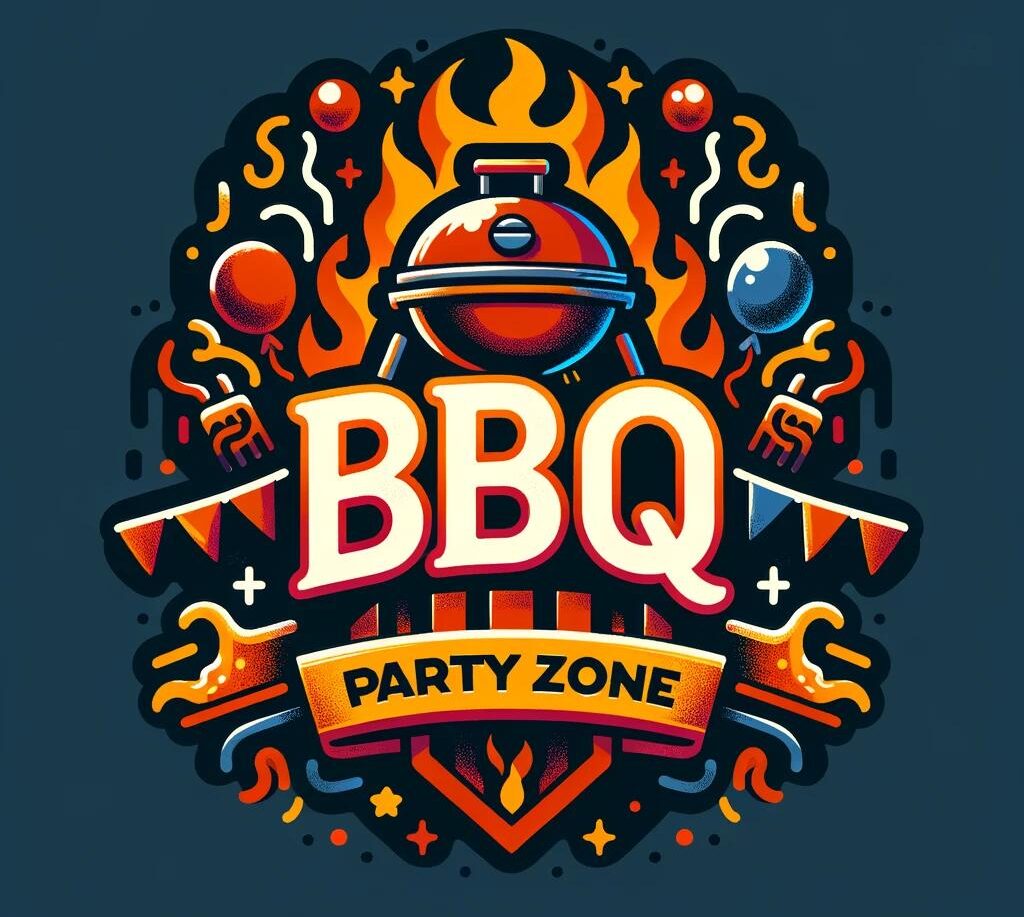


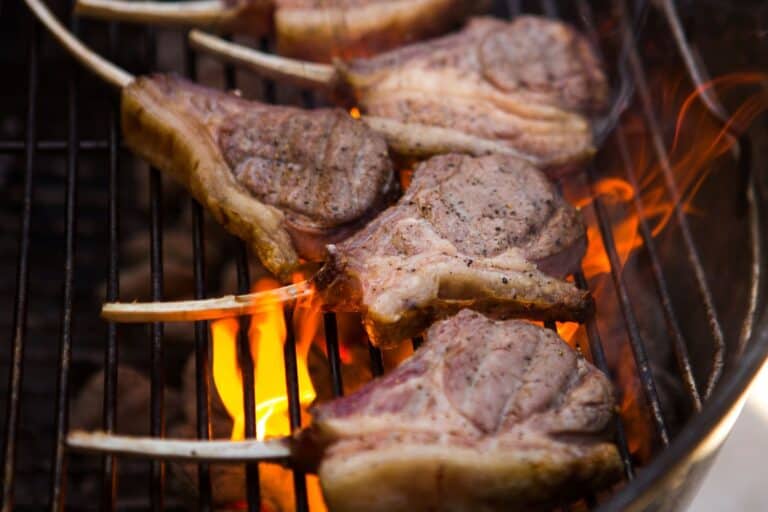

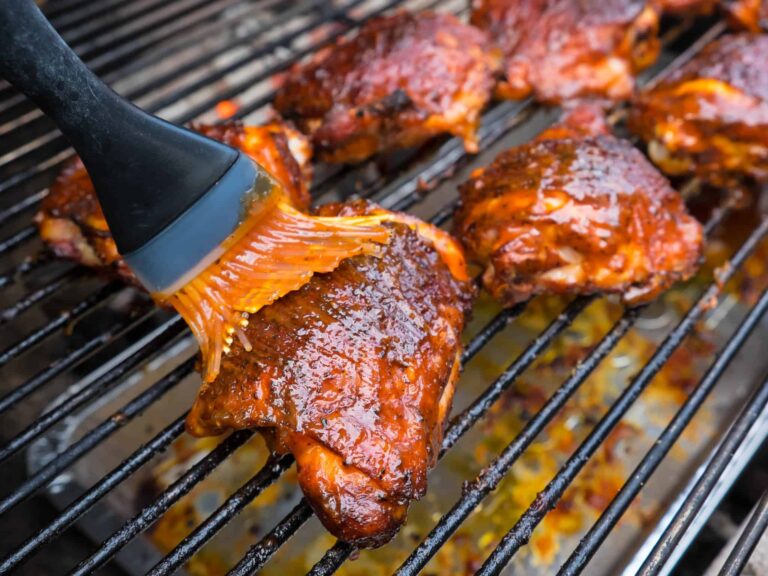
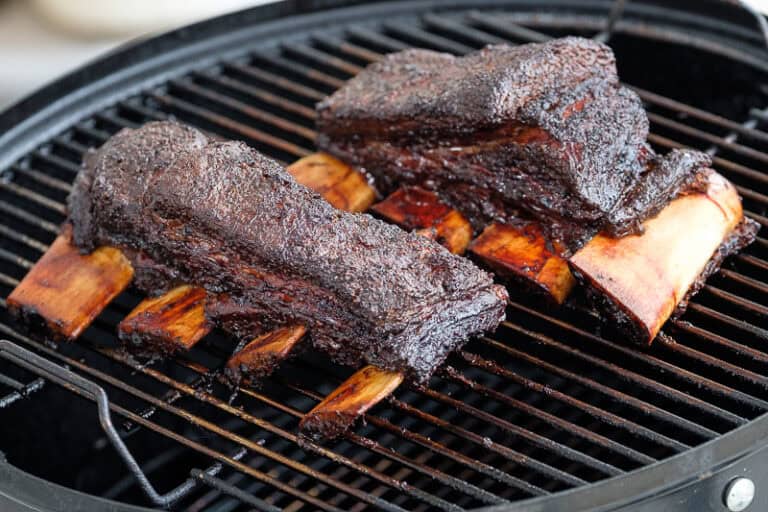

2 Comments